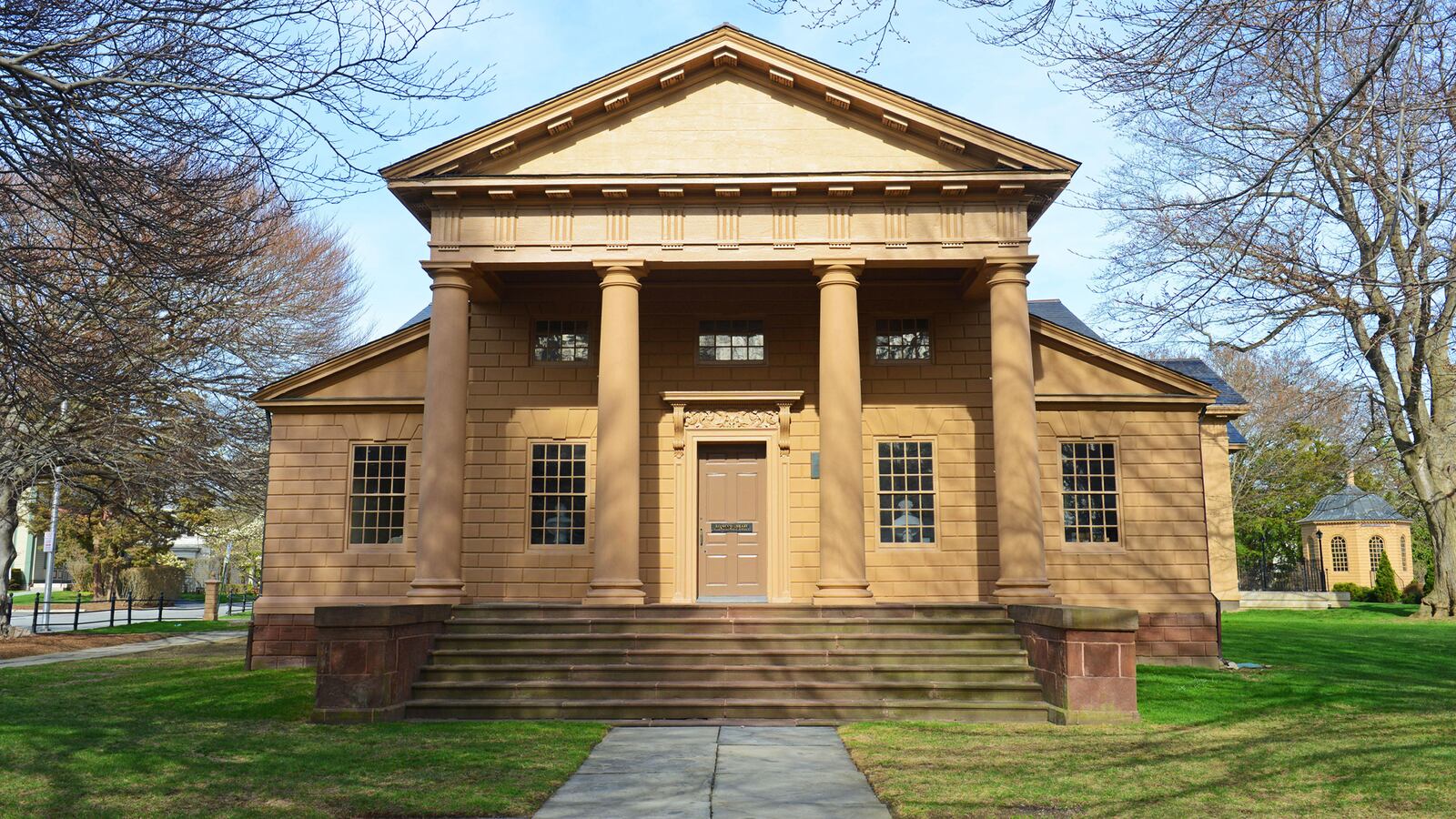As April turned into May in 1775—when spring in New England becomes less of a menace—the greatest architect of colonial America had a seizure, died, and was buried in an unmarked grave in New Haven, Connecticut’s city green.
Peter Harrison was neither born nor made his fortune in New Haven. Instead, it was where a royal sinecure for the self-made Quaker gentleman turned into a nightmare of violent mobs and the constant threat of destruction. Harrison lived just long enough to witness what was for him the unthinkable—a battle between colonists and British forces at Lexington and Concord. A few months later, the biggest troublemaker in New York City, the Sons of Liberty leader Isaac Sears, ensconced himself in New Haven and, sensing an opportunity for violence and enrichment, led the looting and burning of the deceased Harrison’s home.
It was a home that happened to contain what was then greatest architectural library in America, not to mention the now priceless plans and drawings of an architect who designed some of the most notable buildings in colonial America. It was an act of destruction that relegated Harrison to obscurity for centuries. He was further erased from Americans’ collective memory—the final indignity—by Thomas Jefferson and others disinclined to write about, much less extol the progenitor of American classicism because he also happened to be a British loyalist. (A decision which benefited Jefferson, who we now think of in that role.)
The burning of Harrison’s library and his architectural drawings deprives us of any clear idea of the extent of his life work. (This has not stopped people from crediting him with the design of hundreds of buildings, from palaces in England to churches up and down the Eastern Seaboard.) But there are a handful—all remarkable—we know about with certainty, and one is the latest selection for our series on the world’s most beautiful libraries.
While there are undoubtedly more and grander buildings and palaces from the 17th and 18th centuries in Europe than the U.S., the east coast and the southwest have plenty of examples of urban planning and professional and vernacular architecture that are beautiful and worthy of pride.
In fact, just down the street from the 19th century palaces erected by another generation of wannabe Europeans in my hometown of Newport, Rhode Island is one such building—Redwood Library.
Today the mud-colored Palladian masterpiece sits on Newport’s storied Bellevue Avenue. Behind it are blocks of mostly wooden houses designed by the likes of Richard Morris Hunt and McKim, Mead & White. It is undoubtedly more plain than its neighbors, and smaller. But even if you didn’t know that it was the oldest continuously operated library in the U.S., there’s something about its understated presence that grabs your attention.
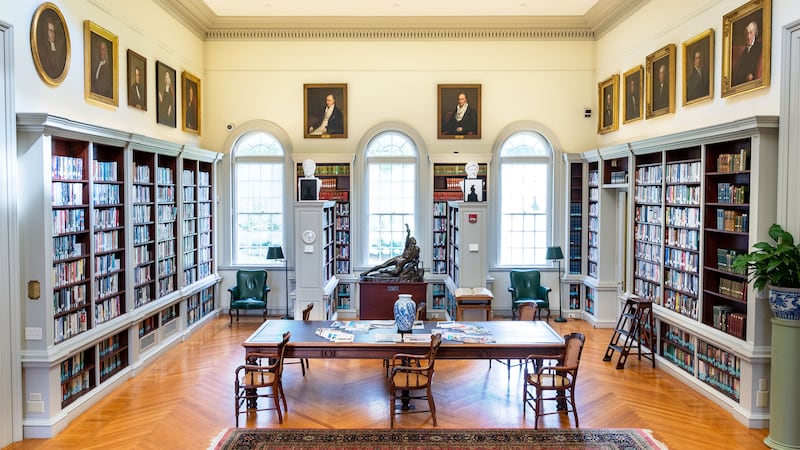
Around 200 years ago, it did command the attention of any and all who visited Newport. The city was one of the centers of commerce in the 17th and 18th century New World, and its merchant class (largely Anglican and Jewish) built stately residences on the harborfront and countryside. Some owned or made their money in the slave trade—in fact Newport as a summer colony started in large part because wealthy planters from places like South Carolina and Barbados sought it out to beat the summer heat. One of those men was Abraham Redwood, who made his fortune with a sugar plantation in Barbados and retired in Newport while still in his thirties. He also embodied the foul contradiction that stained so many of his “enlightened” peers. He believed in the Enlightenment and the power of education for the betterment of man. At the same time, he was the unrepentant owner of some 238 slaves--the Quaker church disowned him for refusing to free his slaves.
In 1747, he joined 45 other colonists to create a subscription library, the second in America after Benjamin Franklin’s in Philadelphia. Redwood made a bequest of £500 for books to fill its shelves. Land on a hill overlooking the busy harbor was given and a committee formed to drum up money for a suitable building. By the summer of 1748, a decision had been made—the building would be designed by 32-year-old Peter Harrison.
At that point in his life, Harrison was already a successful merchant, shipbuilder, expert in husbandry, surveyor, military fort builder, and gentleman. What he was not was an experienced architect, having so far designed only one building: the royal governor’s mansion at Shirley Place, which still stands.
This is not as odd as it may sound to a modern reader. As historian Carl Bridenbaugh notes in his biography of Harrison, the 18th century “was the time in England [and its colonies] when the practice of architecture if such it could be called was in the hands of noblemen or in those of middle-class designers encouraged and patronized by widely traveled nobles acquainted with Italian examples. There were no architects in the professional sense.” Everybody from dabbling aristocrats to bricklayers were “architects,” all thanks to the style in vogue in the first half of the 18th century—Palladianism.
Palladianism was a style of architecture formed from the writings of Andrea Palladio, the 16th-century Venetian architect who studied Greek and Roman architecture. He was part of a line of 15th- and 16th-century Italian architects including Alberti and Serlio who were inspired by the classical remains around them and the rediscovery of the writings of Vitruvius. Like the others, Palladio became influential not only because of the buildings he designed, but because he put all of his research and ideas into an illustrated book (I Quattro Libri dell’Architettura, or, The Four Books of Architecture) that was translated multiple times and became immensely popular.
It was introduced in England in the 17th century by Inigo Jones, the royal “architect” (he was a set and costume designer and much of how he came about designing buildings remains a mystery), and reached its peak of influence in the 18th century under Lord Burlington and Colen Campbell, who published the popular book Vitruvius Britannicus which featured engravings of works in Great Britain, including those by Jones, Lord Burlington, and Campbell himself. It had the self-promotional effect of re-popularizing the Palladian style. If you have extra time in Newport, a near-exact replica of a Campbell design can be found along upper Bellevue Avenue. Clarendon Court, where Claus von Bulow was accused of attempting to murder his wife, the heiress Sunny, is a near-exact replica of a design in the book by Horace Trumbauer.
A rapid succession of books was published with detailed instructions and drawings on things like how to build a Corinthian column and use a cornice, enabling those dabbling aristocrats and ambitious craftsmen to join the neoclassical wave. One of those men was Peter Harrison, who on a trip to Europe purchased James Gibbs’ A Book of Architecture, William Kent’s The Designs of Inigo Jones, and the translation of Palladio’s books by Hoppus. (He also bought on that same trip Robinson Crusoe and A Defense of the Female Sex.)
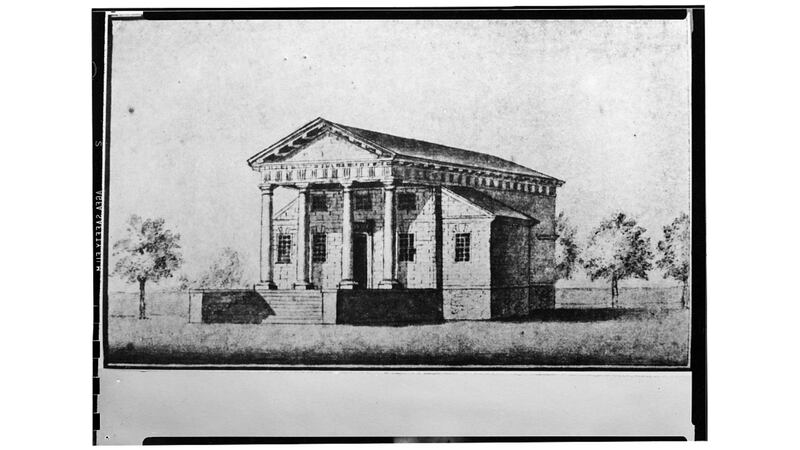
A drawing of Redwood Library In 1768 by Pierre du Simitiere
Library of CongressThe design Harrison submitted for the Redwood library’s streetside facade is a barely modified version of a temple front in the introduction to The Fourth Book of Andrea Palladio’s Architecture. It features a pediment on four Doric columns flanked by two symmetrical half-gable wings. The entablature running around the whole building is one of two main differences—it is simpler in Harrison’s design. And Redwood is in fact made of wood, rusticated to look like stone. In the rear, Harrison took the Venetian windows from the 1729 designs of Chiswick House and added them. While his later works like Touro Synagogue, the Brick Marketplace, King’s Chapel, and the still magnificent Vernon House would see him pulling and modifying from various influences, Bridenbaugh writes, Redwood “adhered rather slavishly to the great Palladian books.”
A century later, architect George Champlin Mason, a favorite of the robber barons, surveyed the Redwood library and wrote that Harrison was “not simply a carpenter with a smattering of professional knowledge … the building erected by Harrison was most carefully planned and studied; in proportions, details, columns, etc being in strict accord with the rules of classical architecture.”
When the library was completed in 1750, it was unique in the colonies and would have been fashionable even had it been made in England—a situation that would be rare in America for another 100 years.
It shouted, “We’re not just savages on the edge of civilization,” Benedict Leca, executive director of the Redwood, told me recently; instead it showed these men were firmly part of the Enlightenment.
The front room still looks as it did in Harrison’s day, with simple yet elegant millwork. It was filled with the then-staggering number of 751 books, all donated by Redwood.
While Harrison would go on to design a number of other buildings (including a garden pavilion for Redwood’s summer estate that was moved to the library grounds), his life was forever altered when his brother Joseph took the position of royal collector for New Haven in 1760. The Harrison family was firmly Tory, and even more so after his brother was promoted to Boston and Peter took over the New Haven gig. While family friends fled to England in the 1760s and ’70s, a time when New England was plagued with spasms of violence and rebellion, the Harrisons stayed. It did not end well for them. Besides the posthumous destruction of Harrison’s New Haven property, including his books and papers, his wife would die impoverished amid the ruins of their Newport estate, which during the Revolution was trashed first by rebels and then by Hessian mercenaries.
The revolution was also unkind to the library. The British used it as an officers’ club, and books rapidly disappeared from its shelves. (Roughly 92 percent of the original collection is back in the library after a two-century campaign to re-acquire the books.) But while Newport would never again be the important commercial port it was before the Revolution, its rise as the preeminent summer destination meant that Redwood still attracted illustrious members throughout the 19th century, including Edith Wharton and Henry Wadsworth Longfellow. It also had two of America’s most important portraitists as members, Gilbert Stuart and Charles Bird King, and so the library also has a magnificent art collection on its walls.
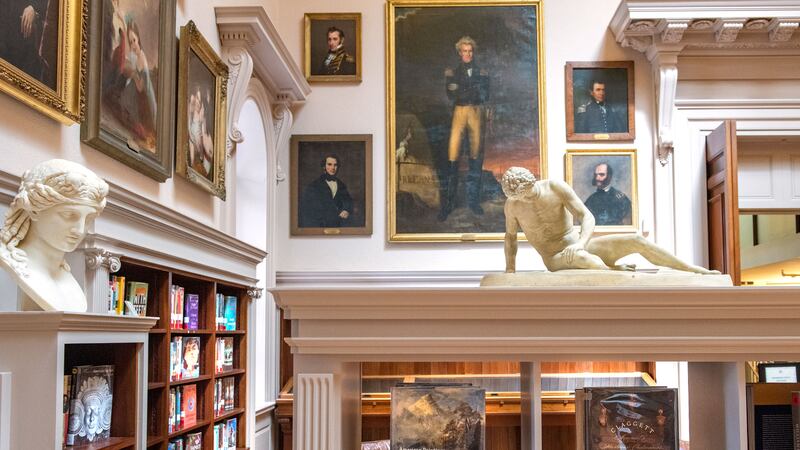
By the 1850s the library had outgrown the single room Harrison built and after an initial plan to demolish it, the architect George Snell was hired to build an extension. Snell, whose elegant townhouses dot Boston’s Back Bay, added a new hall on the rear. Snell’s addition is a virtual perfect extension of Harrison’s design, and he even preserved the Venetian windows, moving them from the rear to the side. Just a decade later, membership had grown even more and another extension was needed. This time they turned to local architect George Champlin Mason for a large stone atrium-like addition (Mason specified olive-colored Berea/Nova Scotia stone), which is the building you now enter today.
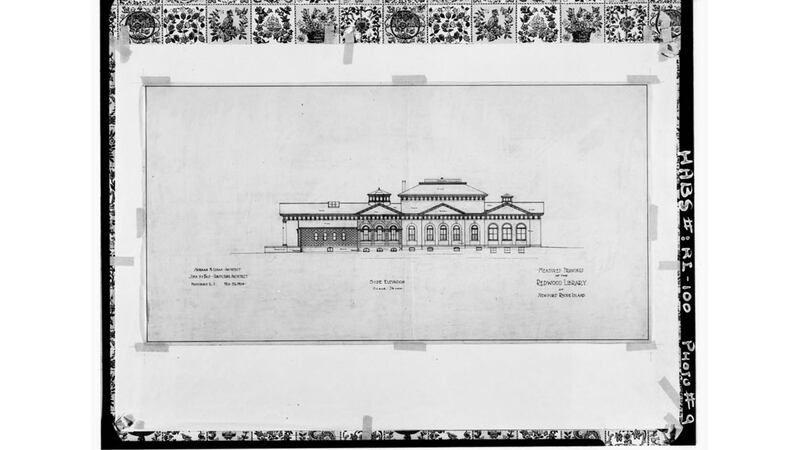
Survey of Redwood Library on July 20, 1970
Library of CongressIn the midst of the Great Depression, the landscape was overhauled by Newport resident and starchitect John Russell Pope (whose residence The Waves is at the end of the Cliff Walk), who moved the Redwood garden pavilion to its current location. A few years later, Marion Sims Wyeth added a fourth extension to the building. Wyeth was the architect for Newport resident Doris Duke’s Shangri La estate in Hawaii and also of Mar-a-Lago in Palm Beach. When Harry Thaw, the man who fatally shot architect Stanford White, saw Mar-a-Lago, he reportedly exclaimed, “I shot the wrong architect!” Three more additions would be made through the year 2011. While still a membership library, it is open to the public for visiting, and often other pieces of the collection like rare books and prints will be on display.
When it opened nearly 300 years ago, though, the library must have seemed like a temple on a hill with sweeping views out to the bay. It was a Greek temple for a new era and for a population that often looked to the classical past for inspiration. But just as the Greeks fail to live up to our ideals of it, so too did Redwood and the Enlightenment era it symbolized. Still, it’s a remarkable work that allows one to dive not only into the conundrum of Enlightenment luminaries arguing about freedom while enslaving humans but also into the nascent artistic character of our country.
